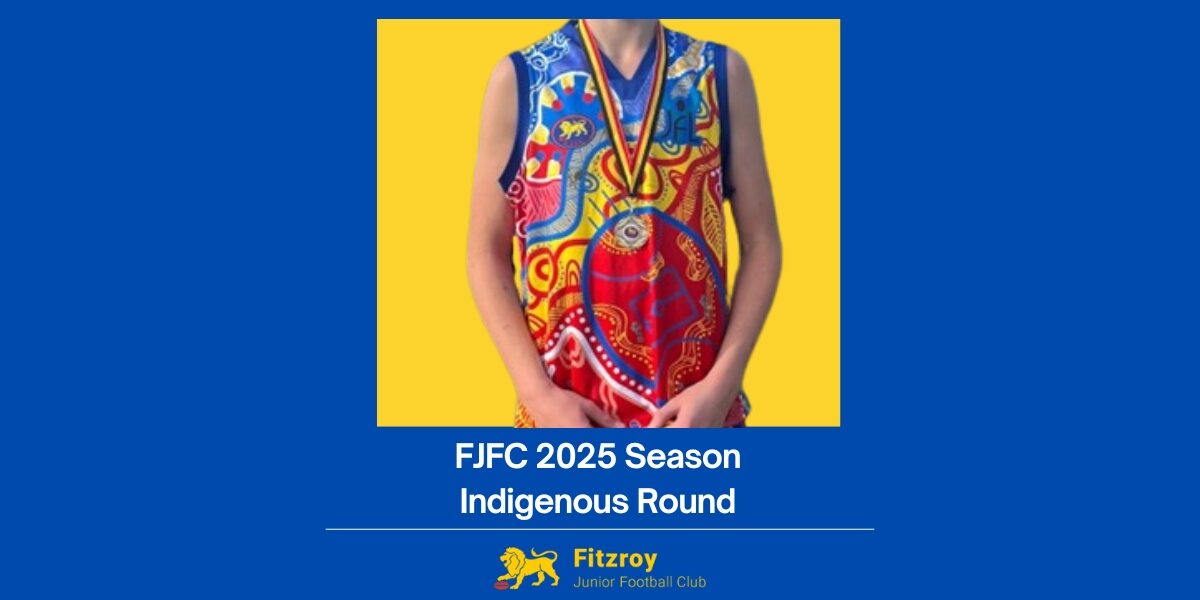
FJFC Indigenous Rounds 2025
May 22, 2025
Indigenous Joe Johnson
Fitzroy Junior Football Club celebrates Indigenous Round.
Over Round 5 & 6, Indigenous Round provides an opportunity to acknowledge and celebrate the rich history and traditions of Aboriginal and Torres Strait Islander peoples within the game.
Indigenous round helps foster a greater understanding and respect for Indigenous communities within the football community and acknowledges the impact of Indigenous players on the sport throughout its history, and ongoing connection with Fitzroy.
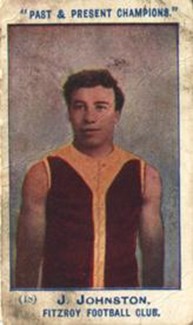
Celebrating Indigenous Round?
Indigenous Round, celebrating former Fitzroy player Joe Johnson at FJFC, and the YJFL serves as a powerful tool for reconciliation, education, and celebration of Indigenous culture within the football community.
Each year since 2011, FJFC holds an Indigenous round to recognise and acknowledge the Wurundjeri people of the Kulin Nation who are the Traditional Custodians of the lands on which we play and train every week. Fitzroy Football Club has strong links with Indigenous players and is known as the club where in 1904 the first recognised Indigenous player – Joe Johnson – played VFL football.
FJFC indigenous round runs parallel to the AFL’s Sir Doug Nicholls Round, who also played for Fitzroy. This is now in its 19th year as a dedicated Indigenous Round and its 10th year bearing the name of Sir Doug Nicholls.
Welcome To Country
During Indigenous Round, games often start with a “Welcome to Country”.
This is a traditional ceremony, usually performed by Aboriginal and Torres Strait Islander people. A Welcome to Country or an Acknowledgement of Traditional Owners recognises the continuing connection of Aboriginal Traditional Owners to their Country.
“Country” refers to the land, sea, and sky, but also encompasses the spiritual and cultural connection Indigenous people have with it, including their ancestors, knowledge, and traditions.
Taking the time to Acknowledge Country, or including a Welcome to Country, reminds us that every day we live, work, and dream on Aboriginal and Torres Strait Islander lands.
It’s a powerful demonstration of respect and acknowledgment of Indigenous ownership and custodianship of the land.
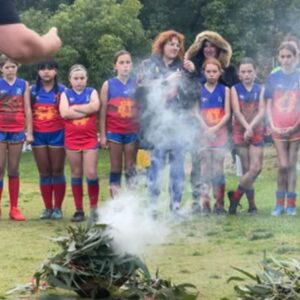
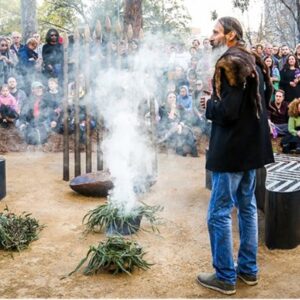
Joe Johnson Medal
The Joe Johnson Medal has been awarded by the Fitzroy Junior Football Club (FJFC) during Indigenous Round since 2011
A player from both sides who demonstrates these qualities is awarded the Joe Johnson Medal by the opposing Coach.
Our principles
We will commence the game with some significant words and at the conclusion of the game, we will be awarding a player from each team an Indigenous Round Medal.
All our teams have the Joe Johnson medal awarded to players for demonstrating in the most outstanding way, five principle.
Endurance, Tenacity, Courage, Loyalty and Pride.
Our Joe Johnson medal winners act as leaders in our “We are Fitzroy” community demonstrating our principles within our great game.
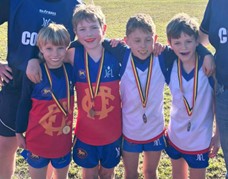
Here is a link to 2025 photos of Joe Johnson Medalists on Flickr: 2025 Club Round 5 & 6 FJFC Indigenous Round – Joe Johnson Medals
Our Jumper
At FJFC, we proudly wear our uniquely designed Indigenous guernseys and share the stories and meanings behind their designs during the round, reflecting their connection to the community and the significance of the round.
Indigenous Round 2025 will see the Youth Boys and Youth Girls, and under 14-16 teams continue to proudly wear our FJFC Indigenous Jumper.
On Monday 13 December 2021, eight FJFC players met with local Aboriginal artist, Emma Bamblett and the girls team contributed ideas and feelings to be part of the first ever Indigenous jersey design for the club.
These discussions covered themes of community, pride, friendship, effort, teamwork, respect, acceptance, equality, and spirit.
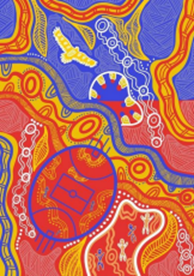
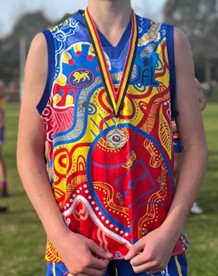
Here are the symbols within the artwork design on our jumper.
- The footy oval represents Brunswick Street Oval (BOS) where our strong history and community feeling comes from, on the bottom left corner.
- Respect for Aboriginal people and the influence that they had on the game of football from past and current players is represented by the Aboriginal flag within the middle of the oval.
- The game and journey that football provides for every player on the field is represented by the yellow line work on the footy oval.
- Bunjil the eagle represents respect for the creator spirit of the Wurundjeri people on the top left side.
- Teamwork is represented by the people sitting around and is represented on the top right side.
- The journey of acceptance and equality is represented by the gum leaf designs throughout the artwork
- Respect and strength are presented by the line work throughout the artwork.
- The footy oval represents the game and journey that football provides for every player on the field is the yellow line work.
- Young players are represented by the figures on the oval.
- Coaching and mentoring and the role that these important roles play for young people is represented by the figures standing at the bottom of the artwork.
- Merri Creek and the important role that the creek played for the lifestyle of Aboriginal people is the centre stream that flows across the centre of the jersey.
- The sense of Community and the opportunities which the club plays for creating spaces for a place of belonging are the white circles connected by the curved lines throughout the artwork.
The players talked about their values, beliefs, and their eagerness to learn and celebrate Aboriginal history, culture and their vision for the future players to also acknowledge and respect Aboriginal culture.
These ideas and stories are what makes them proud to play and be part of The Fitzroy Junior Football Club.
Our Jumper Video https://youtu.be/m0Cu5l95in0
We Are Fitzroy.
During Indigenous Round, we recognise, the “We Are Fitzroy” community, has deep links to First Nations communities, whose people, and elders, past and presents, lived on the lands, where we now play football.
Fitzroy holds a special place in the hearts of many first nations peoples. Located on Wurundjeri country, Fitzroy (the traditional name is Ngár-go) was an important meeting ground for many, across the state. The Wurundjeri-willam people of the Kulin Nation are the Traditional Custodians of the land that is now known as the City of Yarra.
Their relationship with the land extends back tens of thousands of years to when their creator spirit ‘Bunjil’ formed their people, the land and all living things.
The Wurundjeri’s connection to land is underpinned by cultural and spiritual values vastly different to those of the Europeans. The Wurundjeri did not ‘own’ the land in the European sense of the word, but belonged to, or were ‘owned by’ the land.
They did not live in permanent settlements but, rather, camped for periods within defined clan boundaries where food was plentiful, and moved on when the land needed to rejuvenate.
The land provided all the Wurundjeri needed – food, water, medicine, shelter – and they treated it with the respect due to such a provider.
Wurundjeri remain active in our community, practicing culture, performing ceremonies and passing on knowledge to younger generations. These connections help us understand where we have come from and where we are going, as we continue building a strong, vibrant and inclusive community at Fitzroy.
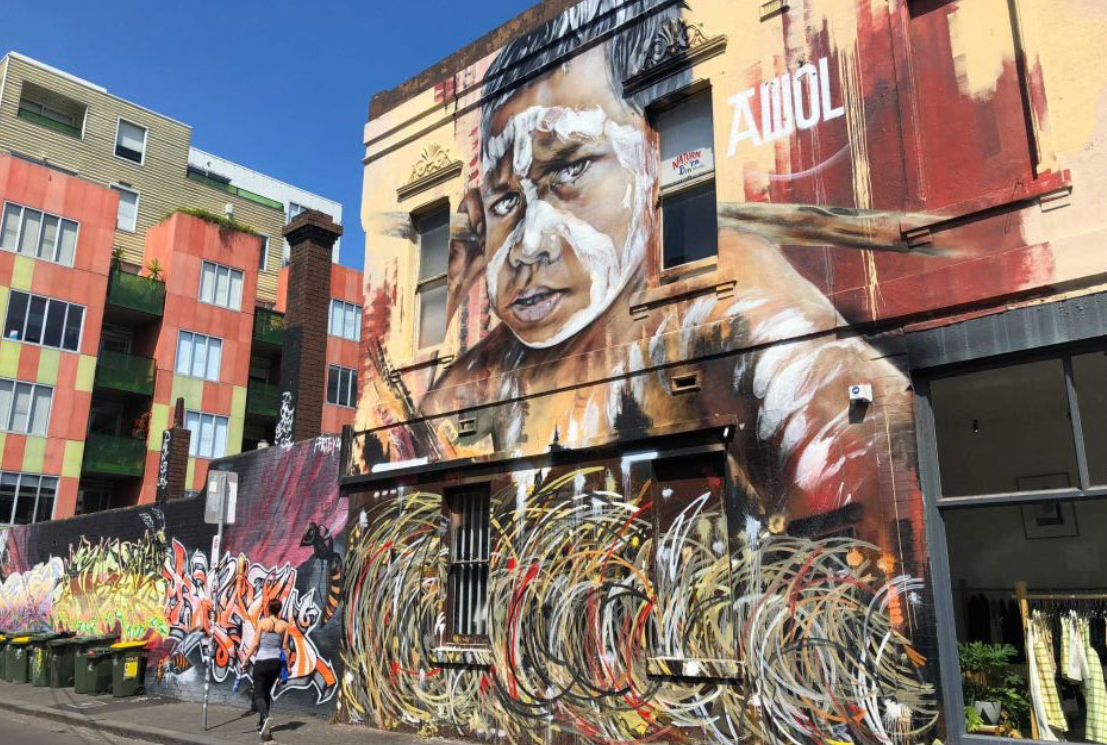
Learn more
Discover more about the City of Yarra’s First Nations history Here
Fitzroy Self-Guided Indigenous Walk Yalinguth immersive walking tour app
